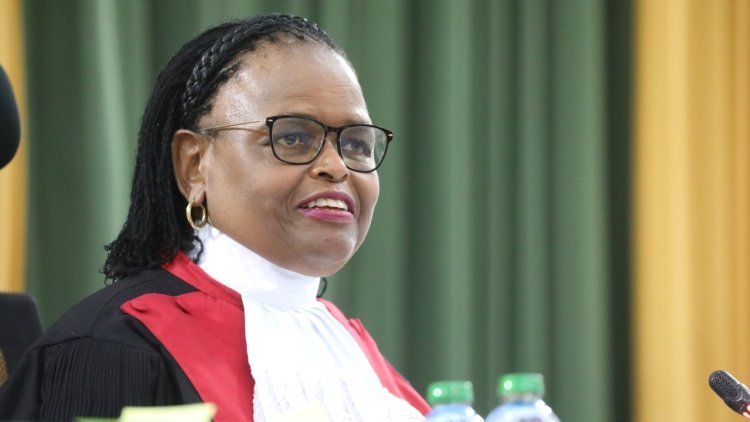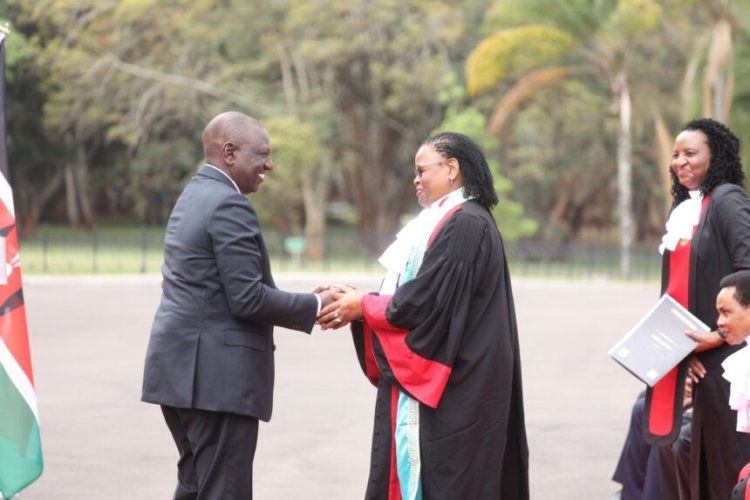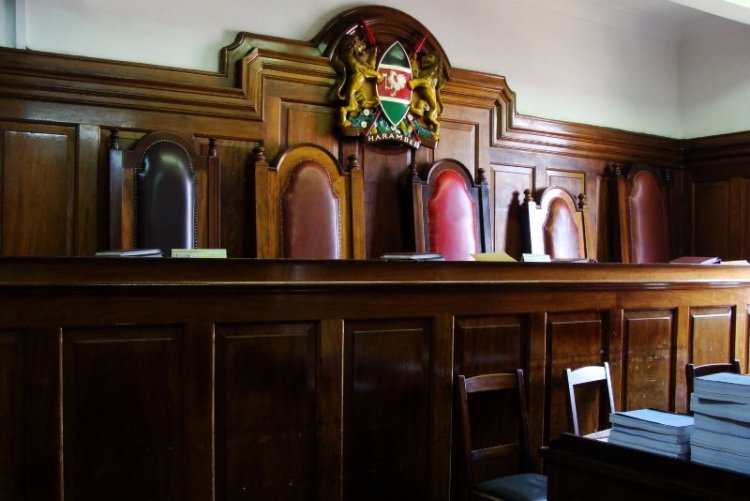Petition: JSC Explains Why It Won't Remove CJ Martha Koome So Soon
A private citizen, Michael Kojo Otieno, had filed a petition seeking to remove Koome, accusing her of failing to adhere to the rule of law

The Judicial Service Commission (JSC) has given its side of the story, explaining why it may not be quick to consider a petition seeking the removal of Chief Justice Martha Koome from office.
A private citizen, Michael Kojo Otieno, had filed a petition seeking to remove Koome, accusing her of failing to adhere to the rule of law in terms of appointing members of the tax appeal tribunal, specifically claiming she appointed two members to the Tribunal outside the legally allowed parameters.
"While appointing persons to serve at the tax appeal tribunal, the judge failed to be honest in the execution of powers conferred to her by the Tax Appeal Tribunal Act based on powers conferred to the judge as a judicial officer...," reads the petition in part.
Kojo further argued that CJ Koome was not transparent and diligent, adding that she discriminated against persons who had applied to be members of the board.

President William Ruto shakes hands with Chief Justice Martha Koome at State House, Nairobi on September 14, 2022. /FILE
JSC Clarification
However, the JSC through a statement issued by its registrar Winfrida Mokaya indicated that the body met on June 3, 2022, following a competitive recruitment process and during the meeting, nine members of the Tax Appeals Tribunal were appointed.
In terms of advocates, Chelugat Edwin Kiprono had resigned, with JSC receiving the notice of his resignation on May 10, 2023. For the non-legal members, Ali Tanvir Mohsin, one of the Tribunal members, resigned on July 8, 2022, and was replaced by Elisha Njeru on September 29, 2022.
In 2023, 12 members were appointed by JSC as Members of the Tax Appeals Tribunal following a meeting held on April 6, 2023. The only instance was for Bernadette Muthira Gitari who took up the appointment with effect from July 1, 2023.
The total number of members appointed to the Tribunal, according to JSC, stood at 21, which is contrary to the petitioner's claim that one more person was appointed, bringing the membership to 22.
The Registrar noted that Ann Waithera Githinji tendered her resignation as Secretary of the Tribunal on October 23, 2023, bringing the total number to 21, including the chairperson.
The response came after petitioner Otieno argued that for the reasons/arguments he provided in his petition, the chief justice is unfit to hold office and should be removed from office.
Further, the petitioner sought Koome's actions in the appointment of the tax appeal tribunal members to be declared illegal, null, and void.
Removing a Judge/Chief Justice From Office
Article 167 of the Constitution of Kenya grants the Chief Justice and Judges a security of tenure as long as they are in office. The Constitution states that:
(1) A judge shall retire from office on attaining the age of seventy years but may elect to retire at any time after attaining the age of sixty-five years.
(2) (5) The Chief Justice and any other judge may resign from office by giving notice, in writing, to the President.
The afore-going necessitates that there be a process to be followed in dismissing a judge in the event the judge has not attained the age of retirement nor has voluntarily written a letter of resignation to the President.
The Constitution of Kenya, Chapter 10, Article 168 is specifically formulated to look into such a scenario. It gives direction, steps and parameters to be met before such a case is dispensed with. It states thus:
(1) A judge of a superior court may be removed from office only on the grounds of--
- inability to perform the functions of office arising from mental or physical incapacity;
- a breach of a code of conduct prescribed for judges of the superior courts by an Act of Parliament;
- bankruptcy;
- incompetence; or
- gross misconduct or misbehaviour.
(2) The removal of a judge may be initiated only by the Judicial Service Commission acting on its motion, or the petition of any person to the Judicial Service Commission.
(3) A petition by a person to the Judicial Service Commission under clause (2) shall be in writing, setting out the alleged facts constituting the grounds for the judge's removal.
(4) The Judicial Service Commission shall consider the petition and, if it is satisfied that the petition discloses a ground for removal under clause (1), send the petition to the President.
(5) The President shall, within fourteen days after receiving the petition, suspend the judge from office and, acting in accordance with the recommendation of the Judicial Service Commission--
(b) in the case of a judge other than the Chief Justice, appoint a tribunal consisting of--
(i) a chairperson and three other members from among persons who hold or have held office as a judge of a superior court, or who are qualified to be appointed as such but who, in either case, have not been members of the Judicial Service Commission at any time within the immediately preceding three years;
- one advocate of fifteen years standing; and
- two other persons with experience in public affairs.
(6) Despite Article 160 (4), the remuneration and benefits payable to a judge who is suspended from office under clause (5) shall be adjusted to one-half until the judge is removed from, or reinstated in office.

An image of a courtroom in Kenya. /FILE
(7) A tribunal appointed under clause (5) shall--
- be responsible for the regulation of its proceedings, subject to any legislation contemplated in clause (10); and
- inquire into the matter expeditiously and report on the facts and make binding recommendations to the President.
(8) A judge who is aggrieved by a decision of the tribunal under this Article may appeal against the decision to the Supreme Court, within ten days after the tribunal makes its recommendations.
(9) The President shall act in accordance with the recommendations made by the tribunal on the later of --
- the expiry of the time allowed for an appeal under clause (8), if no such appeal is taken; or
- the completion of all rights of appeal in any proceedings allowed for under clause (8), if such an appeal is taken and the final order in the matter affirms the tribunal’s recommendations.
(10) Parliament shall enact legislation providing for the procedure of a tribunal appointed under this Article.
Accordingly, the Judicial Service Act No. 1 of 2011 Revised Edition 2012 [2011] states the following on the removal of Judges from office:
- The procedure governing the conduct of a tribunal set up to remove the Chief Justice, Deputy Chief Justice or a judge shall be as set out in the Second Schedule.
- If the tribunal referred to in subsection (1) is for the removal of a judge, other than the Chief Justice, the appointing authority shall appoint the Chairperson and the members shall elect a vice-Chairperson of the tribunal from amongst their number.
- The Chairperson and Vice-Chairperson appointed for purposes of removal of a Chief Justice or Deputy Chief Justice or elected under subsection (2) shall be persons of the opposite gender.
- The appointing authority may appoint a counsel to assist the tribunal.

 admin
admin 




